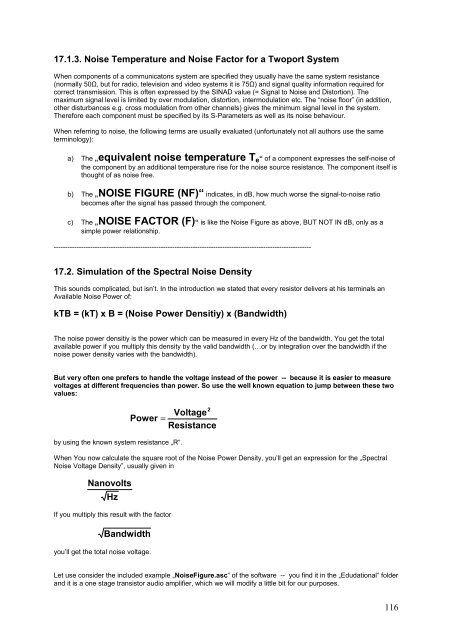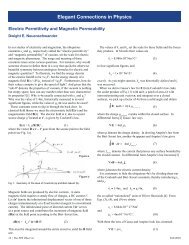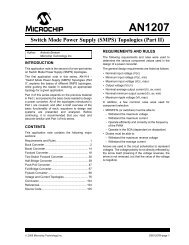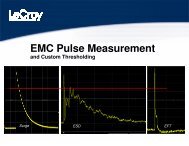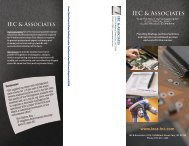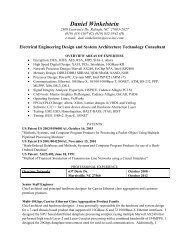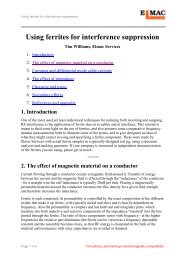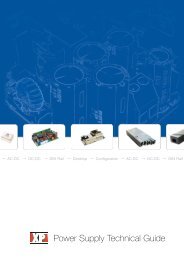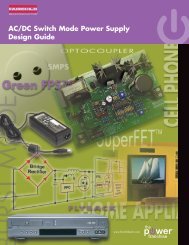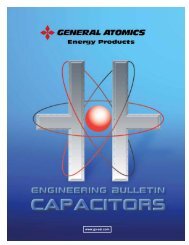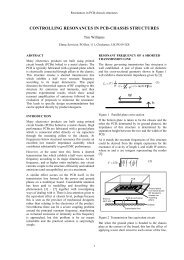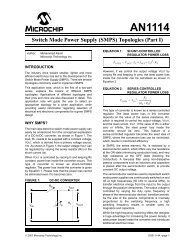Spice-Simulation Using LTspice Part 2 - IEC & Associates
Spice-Simulation Using LTspice Part 2 - IEC & Associates
Spice-Simulation Using LTspice Part 2 - IEC & Associates
- No tags were found...
Create successful ePaper yourself
Turn your PDF publications into a flip-book with our unique Google optimized e-Paper software.
17.1.3. Noise Temperature and Noise Factor for a Twoport SystemWhen components of a communicatons system are specified they usually have the same system resistance(normally 50, but for radio, television and video systems it is 75) and signal quality information required forcorrect transmission. This is often expressed by the SINAD value (= Signal to Noise and Distortion). Themaximum signal level is limited by over modulation, distortion, intermodulation etc. The “noise floor” (in addition,other disturbances e.g. cross modulation from other channels) gives the minimum signal level in the system.Therefore each component must be specified by its S-Parameters as well as its noise behaviour.When referring to noise, the following terms are usually evaluated (unfortunately not all authors use the sameterminology):a) The „equivalent noise temperature T e “ of a component expresses the self-noise ofthe component by an additional temperature rise for the noise source resistance. The component itself isthought of as noise free.b) The „NOISE FIGURE (NF)“ indicates, in dB, how much worse the signal-to-noise ratiobecomes after the signal has passed through the component.c) The „NOISE FACTOR (F)“ is like the Noise Figure as above, BUT NOT IN dB, only as asimple power relationship.-----------------------------------------------------------------------------------------------------------------17.2. <strong>Simulation</strong> of the Spectral Noise DensityThis sounds complicated, but isn’t. In the introduction we stated that every resistor delivers at his terminals anAvailable Noise Power of:kTB = (kT) x B = (Noise Power Densitiy) x (Bandwidth)The noise power densitiy is the power which can be measured in every Hz of the bandwidth. You get the totalavailable power if you multiply this density by the valid bandwidth (…or by integration over the bandwidth if thenoise power density varies with the bandwidth).But very often one prefers to handle the voltage instead of the power -- because it is easier to measurevoltages at different frequencies than power. So use the well known equation to jump between these twovalues:2VoltagePower =Resistanceby using the known system resistance „R“.When You now calculate the square root of the Noise Power Density, you’ll get an expression for the „SpectralNoise Voltage Density”, usually given inNanovoltsHzIf you multiply this result with the factorBandwidthyou’ll get the total noise voltage.Let use consider the included example „NoiseFigure.asc“ of the software -- you find it in the „Edudational“ folderand it is a one stage transistor audio amplifier, which we will modify a little bit for our purposes.116


